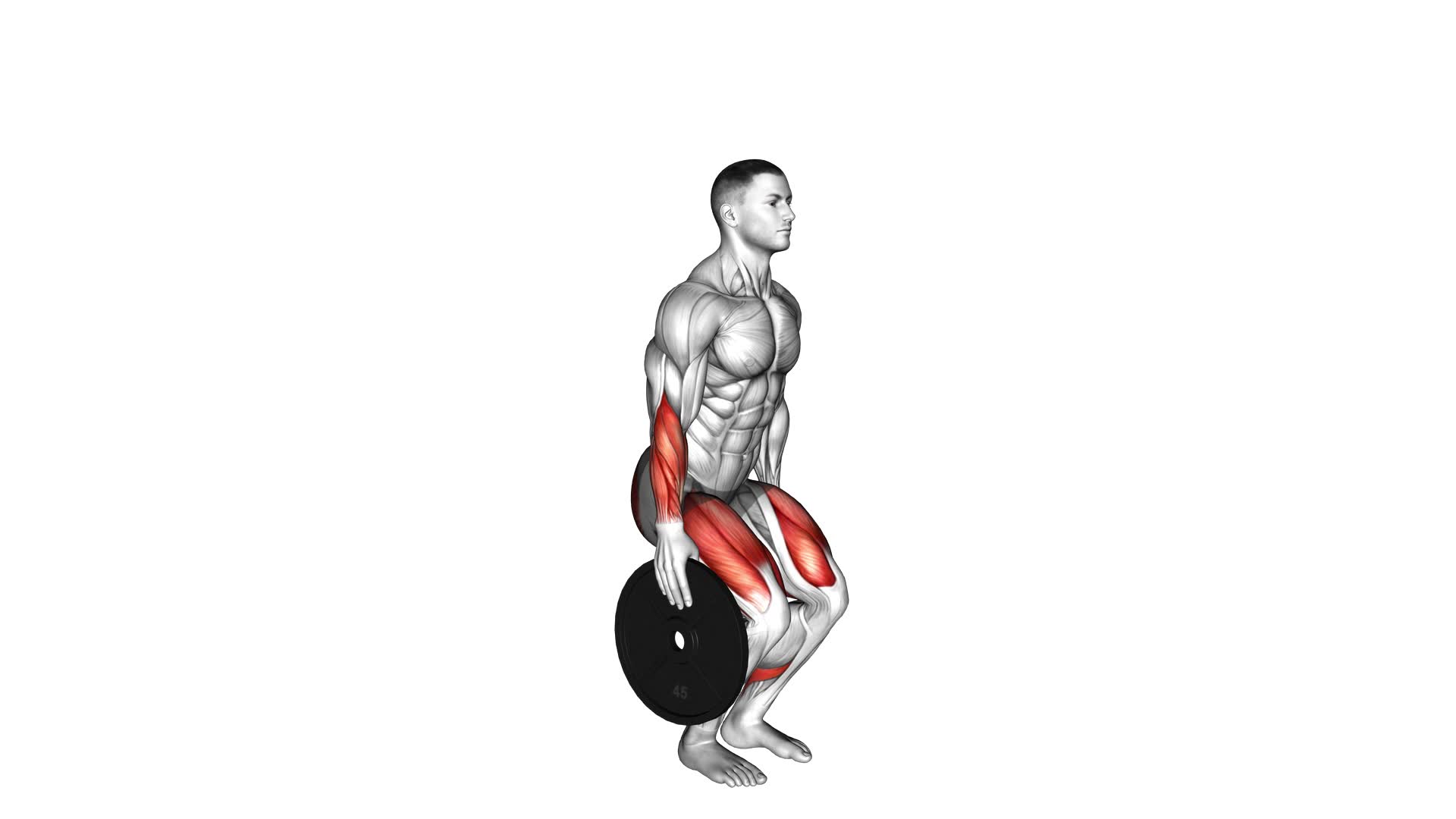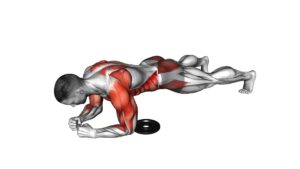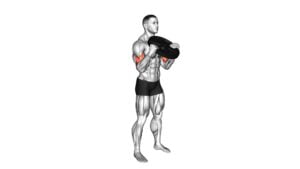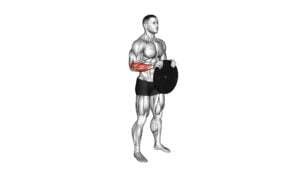Plate Pinch – Video Exercise Guide & Tips

Are you looking for a quick and effective way to increase your grip strength? Look no further than plate pinch exercises.
Watch This Exercise Video
In this video exercise guide, we'll show you the proper technique and provide helpful tips to help you maximize your results.
Whether you're a fitness enthusiast or an athlete looking to improve your performance, plate pinch exercises are a great addition to your training routine.
Get ready to strengthen those fingers and forearms!
Key Takeaways
- Plate pinch exercises can increase grip strength and improve hand dexterity.
- These exercises can strengthen muscles in the hands and forearms, enhancing the ability to perform everyday tasks.
- Plate pinch exercises can help prevent hand and wrist injuries.
- Incorporating progressive overload and prioritizing injury prevention can help increase grip strength with plate pinch exercises.
Benefits of Plate Pinch Exercise
You can experience increased grip strength by regularly incorporating plate pinch exercises into your workout routine. Plate pinch exercises involve holding weight plates between your fingers and thumb, which helps to improve hand dexterity and strengthen the muscles in your hands and forearms. This exercise can benefit not only athletes and weightlifters but also individuals of all fitness levels.
Improving hand dexterity is essential for performing everyday tasks such as opening jars, gripping objects, and manipulating tools. By incorporating plate pinch exercises into your routine, you can enhance your ability to perform these tasks with ease and precision.
Additionally, plate pinch exercises can help prevent hand and wrist injuries. Strengthening the muscles in your hands and forearms can provide extra support and stability to your wrists, reducing the risk of sprains and strains. This is especially important for individuals who engage in activities that put a lot of stress on the hands and wrists, such as weightlifting or playing sports.
To maximize the benefits of plate pinch exercises, it's recommended to start with lighter weight plates and gradually increase the weight as your grip strength improves. Aim to perform these exercises at least two to three times a week, with proper form and technique.
Incorporating plate pinch exercises into your workout routine can provide numerous benefits, including improved hand dexterity and prevention of hand and wrist injuries. So, grab those weight plates and start pinching your way to stronger and healthier hands.
Equipment Needed for Plate Pinch Exercise
To perform the Plate Pinch exercise, you'll need weight plates. These plates should be round and have a smooth surface to ensure a good grip. The weight of the plates will depend on your strength level and fitness goals. It's recommended to start with lighter plates and gradually increase the weight as you progress.
In addition to weight plates, you may also need a pair of gloves to provide extra grip and protect your hands from calluses. Gloves with textured palms can be particularly helpful during the Plate Pinch exercise.
While the Plate Pinch exercise is an effective way to improve hand strength, there are also alternative grip exercises that you can incorporate into your routine. These exercises include wrist curls, farmer's walks, and towel hangs. By varying your grip exercises, you can target different muscles in your hands and forearms, leading to overall strength improvement.
To maximize the benefits of the Plate Pinch exercise, it's important to avoid common mistakes. One common mistake is using an improper grip technique. Make sure to grip the weight plates firmly with your fingertips and avoid using your palm. Another mistake is using plates with sharp edges, which can cause discomfort and potentially injure your hands. Always check the plates for any sharp edges before starting your exercise.
Proper Technique for Plate Pinch Exercise
To perform the Plate Pinch exercise correctly, focus on maintaining a secure grip on the weight plates with your fingertips. This exercise is great for strengthening your grip and forearm muscles.
However, there are a few common mistakes that people often make, which can lead to injuries if not corrected.
One common mistake is using too heavy of weight plates. It's important to start with lighter plates and gradually increase the weight as you get stronger. Using weights that are too heavy can put excessive strain on your fingers and increase the risk of injury.
Another mistake isn't using proper form. Make sure to keep your shoulders back and down, and maintain a straight back throughout the exercise. Avoid rounding your shoulders or hunching over, as this can strain your neck and shoulders.
To prevent injuries during the Plate Pinch exercise, it's crucial to warm up your hands and wrists before starting. You can do this by performing wrist stretches and hand exercises. Additionally, listen to your body and stop if you experience any pain or discomfort.
Tips for Increasing Grip Strength With Plate Pinch Exercise
To further enhance your grip strength with the Plate Pinch exercise, focus on incorporating progressive overload into your training routine. Progressive overload means gradually increasing the difficulty or intensity of your workouts over time. This can be done by adding more weight to the plates or increasing the duration of the exercise. By challenging your grip with heavier weights or longer holds, you'll stimulate muscle growth and improve your grip strength.
In addition to progressive overload, it's important to prioritize injury prevention. Make sure to warm up your hands and wrists before starting the Plate Pinch exercise. You can do this by performing simple wrist rotations and finger stretches. It's also crucial to maintain proper form throughout the exercise to avoid strain or injury. Keep your wrists straight and avoid bending or twisting them during the movement.
When it comes to training frequency, it's recommended to perform the Plate Pinch exercise 2-3 times per week. This frequency allows for enough recovery time while still providing sufficient stimulus for strength gains. However, listen to your body and adjust the frequency as needed. If you experience excessive soreness or pain, it may be wise to reduce the frequency or intensity of your Plate Pinch workouts.
Variations and Progressions of Plate Pinch Exercise
Explore different variations and progressions of the Plate Pinch exercise to continually challenge and improve your grip strength. By incorporating these variations into your routine, you can target different muscles and enhance your overall grip strength.
Here are three variations of the Plate Pinch exercise that you can try:
- Single Plate Pinch: Start by holding a single weight plate between your fingers and thumb, with the smooth side facing outwards. Lift the plate off the ground and hold it for a few seconds before lowering it back down. This variation focuses on strengthening your finger and thumb grip.
- Double Plate Pinch: Instead of using just one weight plate, hold two plates together with the smooth sides facing outwards. Lift the plates off the ground and hold them for a few seconds before lowering them back down. This variation increases the challenge by requiring you to grip and lift a heavier load.
- Plate Pinch Walk: Place multiple weight plates on the ground in a straight line. Lift one plate at a time and walk along the line, maintaining a strong grip on each plate. This variation not only improves your grip strength but also challenges your coordination and balance.
Incorporating these variations into your Plate Pinch exercise routine can provide a range of benefits, including increased grip strength, improved hand and forearm muscle development, and enhanced overall grip endurance. Experiment with these variations to find the ones that work best for you and keep challenging yourself to achieve continuous progress.
Frequently Asked Questions
Can Plate Pinch Exercise Help Improve Hand Dexterity and Fine Motor Skills?
Plate pinch exercises can definitely help improve your hand dexterity and fine motor skills. By squeezing a plate between your fingers, you're targeting the muscles in your hands and fingers, which can increase finger strength and improve overall hand function.
This exercise is particularly beneficial for individuals with arthritis, as it can help reduce pain and stiffness in the hands.
Incorporating plate pinch exercises into your routine can be a great way to improve hand dexterity and maintain finger mobility.
Is Plate Pinch Exercise Suitable for Individuals With Wrist or Hand Injuries?
Plate pinch exercise is a great way to improve hand dexterity and fine motor skills. However, if you have wrist or hand injuries, it may not be suitable for you.
There are modifications you can make to the exercise to make it more wrist-friendly. Alternatively, there are other exercises you can try that target the same muscles without putting strain on your injured areas.
It's important to consult with a healthcare professional to determine the best approach for your specific condition.
How Often Should Plate Pinch Exercise Be Performed to See Noticeable Improvements in Grip Strength?
To see noticeable improvements in grip strength, it's important to perform the plate pinch exercise regularly. The frequency of plate pinch exercise can vary depending on your fitness level and goals. However, a good starting point is to aim for at least 2-3 sessions per week.
Consistency is key, so make sure to incorporate proper techniques to improve grip strength, such as squeezing the plate tightly and focusing on your finger and thumb muscles.
Are There Any Specific Warm-Up Exercises Recommended Before Starting a Plate Pinch Exercise Routine?
Before starting a plate pinch exercise routine, it's recommended to perform specific warm-up exercises. These warm-up exercises help prepare your muscles and joints for the demands of the plate pinch exercise. They can include wrist rotations, finger stretches, and forearm stretches. Incorporating these warm-up exercises into your routine can help prevent injuries and improve your performance during the plate pinch exercise.
Additionally, the plate pinch exercise itself offers various benefits such as increased grip strength and improved forearm muscles.
Can Plate Pinch Exercise Be Incorporated Into a Full-Body Workout Routine, or Is It Primarily Focused on Grip Strength Training?
Plate pinch exercise can definitely be incorporated into a full-body workout routine. While its primary focus is on grip strength training, it offers additional benefits for athletes.
Conclusion
In conclusion, the Plate Pinch exercise is a highly effective way to improve grip strength. By using simple equipment like weight plates, you can challenge your muscles and increase your overall strength.
Following proper technique and incorporating variations and progressions can help you continue to make progress and see results.
So, if you're looking to enhance your grip strength, give the Plate Pinch exercise a try and feel the difference it can make.

Author
Years ago, the spark of my life’s passion ignited in my mind the moment I stepped into the local gym for the first time. The inaugural bead of perspiration, the initial endeavor, the very first surge of endorphins, and a sense of pride that washed over me post-workout marked the beginning of my deep-seated interest in strength sports, fitness, and sports nutrition. This very curiosity blossomed rapidly into a profound fascination, propelling me to earn a Master’s degree in Physical Education from the Academy of Physical Education in Krakow, followed by a Sports Manager diploma from the Jagiellonian University. My journey of growth led me to gain more specialized qualifications, such as being a certified personal trainer with a focus on sports dietetics, a lifeguard, and an instructor for wellness and corrective gymnastics. Theoretical knowledge paired seamlessly with practical experience, reinforcing my belief that the transformation of individuals under my guidance was also a reflection of my personal growth. This belief holds true even today. Each day, I strive to push the boundaries and explore new realms. These realms gently elevate me to greater heights. The unique combination of passion for my field and the continuous quest for growth fuels my drive to break new ground.







